Чемпионы мира по Го, лучшие Го книги и комплекты, новости мирового и российского Го.
Подфорум курирует А. Динерштейн
Подфорум курирует А. Динерштейн
исторические комплекты игры Го, Китай
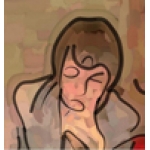
|
Михаил Емельянов на rugo.ru Эксперт Го
|
Тема для архива фотографий

Weiqi pieces and container. China ; Song dynasty (906- 1368). Glazed porcelain container, ceramic pieces ; height of box : 10,5 cm

Weiqi board from a tomb in Wangdu, Heibei Province China ; Eastern Han dynasty (25-220 CE). Stone ; width 69 cm

Weiqi pieces China; Liao dynasty (907-1125). Ceramic; diameter 1.59cm each. Polumbaum Collection

Weiqi board, containers, and pieces China : late Ming dynasty (1644-1911), or early Qing Dynasty (1644-1911), 17h-18th century. Huanghuali, inlaid with silver (board), Huanghuali (containers), stone and bone (pieces); width of board 48.3cm, height of containers : 7cm. Diameter of pieces: 2.5cm

Stone board, Ming dynasty.

Ming dynasty

stone board Yuan dynasty (Mongol), region - Northern China

Weiqi pieces and container. China ; Song dynasty (906- 1368). Glazed porcelain container, ceramic pieces ; height of box : 10,5 cm

Weiqi board from a tomb in Wangdu, Heibei Province China ; Eastern Han dynasty (25-220 CE). Stone ; width 69 cm

Weiqi pieces China; Liao dynasty (907-1125). Ceramic; diameter 1.59cm each. Polumbaum Collection

Weiqi board, containers, and pieces China : late Ming dynasty (1644-1911), or early Qing Dynasty (1644-1911), 17h-18th century. Huanghuali, inlaid with silver (board), Huanghuali (containers), stone and bone (pieces); width of board 48.3cm, height of containers : 7cm. Diameter of pieces: 2.5cm

Stone board, Ming dynasty.

Ming dynasty

stone board Yuan dynasty (Mongol), region - Northern China
Re: исторические комплекты игры Го, Китай

|
Михаил Емельянов на rugo.ru Эксперт Го
|

предметы, найденные в могиле Цао Цао. Обратите внимание на круглую "таблетку" из агата
Справка: Князь Цао Цао был великим мастером Вейцы и стратегии. Он часто участвовал в матчах с такими игроками Вейцы как Шан Цзидао, Гуо Кай и Ван Цзижень. Недавно в могиле деда Цао Цао Цао Тана были найдены камни для Вейцы. У Цао Цао было 25 сыновей и среди них Цао Пи и Сао Джан были убиты во время игры в Вейцы.
Так как Цао Цао любил Вейцы, многие его последователи также увлекались этим искусством. Среди Семи ученых Дзянгана Инь И написал «Суть И», а Ван Цань написал «Поэма И». Ван Цань был известен за свою удивительную память на постановки.
Re: исторические комплекты игры Го, Китай

|
Михаил Емельянов на rugo.ru Эксперт Го
|
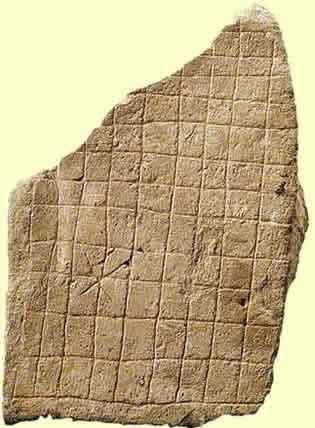
Fragment of a crude pottery Go board excavated during the 1990s from the site of the southern gate to the mausoleum of Emperor Jing Di; (reigned 156-141) and his consort at Yangling; near Xianyang in Shaanxi province. Date : Uncertain, as it is not associated with the main burial, but assumed to date to the Western Han period (206 B.C. - 25 A.D.).
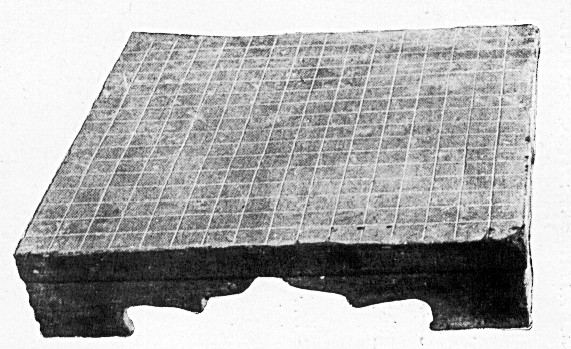
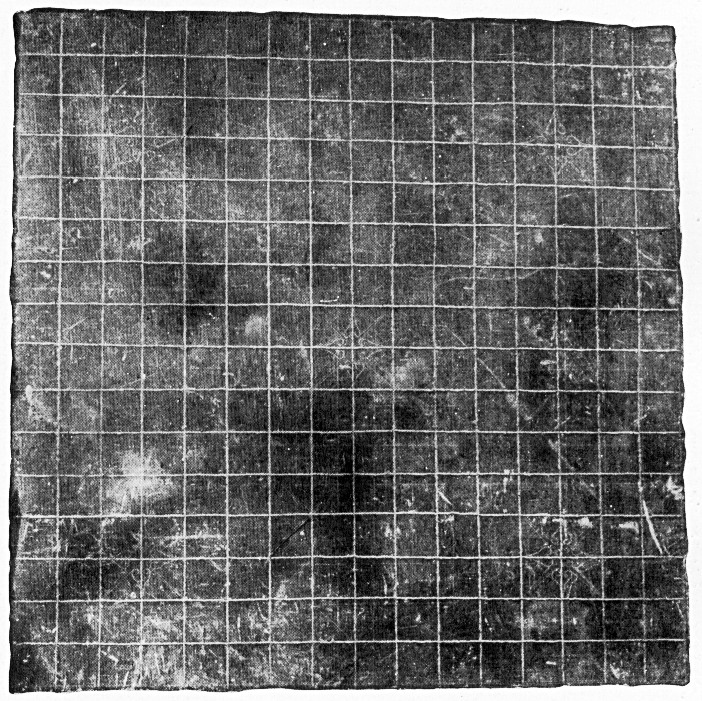
Source : Wangdu Hanmu Bihua (Beijing, 1955)
Description : Stone Go board excavated in 1952 from the Han dynasty tomb M1 at Wangdu; in Hebei province.
Date : Late Eastern Han period (25-220).
Size : 69 cm.
Grid : 17, with the five primary star points marked.
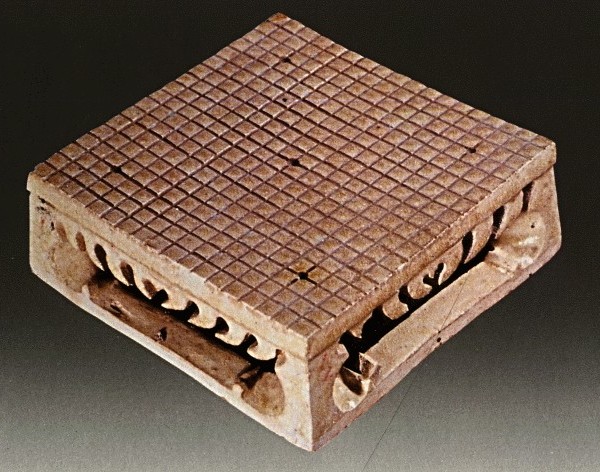
Source : Survey of Chinese Ceramics (Taibei, 1991) vol.2 page 171
Description : White ceramic Go board found near Anyang 安陽 in Henan province.
Date : Early Sui dynasty (581-618).
Size : 10.2 cm.
Grid : 19, with the five primary star points marked.
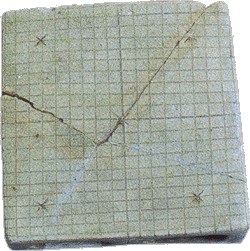
Description : Model Go board excavated from the tomb of Ran Rencai; at Wanzhou district; in Chongqing.
Date : Tang dynasty (618-907) : 654.
Size : 11.0 cm.
Grid : 19, with the five primary star points marked.

Source : Xinjiang Chutu Wenwu; (Beijing, 1975) plate 189
Description : Wooden Go board excavated in 1973 from the tomb of Zhang Xiong; (died 633) and his wife (died 688) (M206) at Astana; in Xinjiang (see Wen Wu; 1975.7).
Date : Tang dynasty (618-907) : 688.
Size :
Grid : 19.
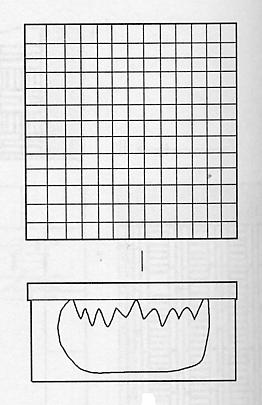
Source : Wen Wu; 2006.11 p.50
Description : Pottery model Go board excavated in 1994 from tomb M4 at Yueyang ; in Hunan province.
Date : Tang dynasty (618-907).
Size : 11.0 cm.
Grid : 14 !
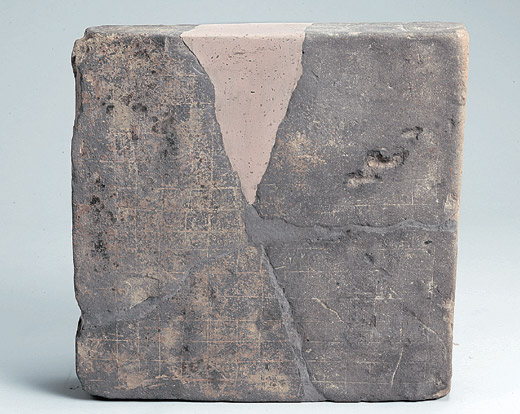
Description : Brick Go board found in 2006 at the Bunhwangsa Temple in Gyeongju (the capital of the Silla kingdom) in Gyeongsangbuk-do province, South Korea. The board broke into three pieces on discovery, and one piece is missing.
Date : Unified Silla period (668-935).
Size : 42 cm.
Grid : 15.
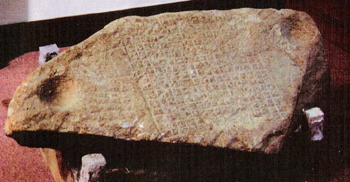
Description : Crude stone Go board found in 2000 during the renovation of a house near the ruins of the Byams pa mi 'gyur gling palace, the reputed birthplace of King Songts; in Gampo (617?-649), at rGya ma in Maizhokunggar county in Tibet (see Guntram Hazod's The Royal Residence Pho Brang Byams Pa Mi 'Gyur Gling and the story of Srong bTsan sGam Po's Birth in rGya Ma in Tibet, past and present (proceedings of the Ninth Seminar of the International Association for Tibetan Studies, Leiden 2000) (Leiden, 2002) pages 27-47). The stone was resting against the wall of the house, but is presumed to come from the palace, as that was the source of building material for the house.
Date : Uncertain, but Guntram Hazod suggests that "the stone slab might have come from a very old stratum or even the foundation period" (i.e. the period of King Songts; in Gampo).
Size : 56 cm. (including a 10 cm wide hollow at each end to hold the Go stones).
Grid : 17.
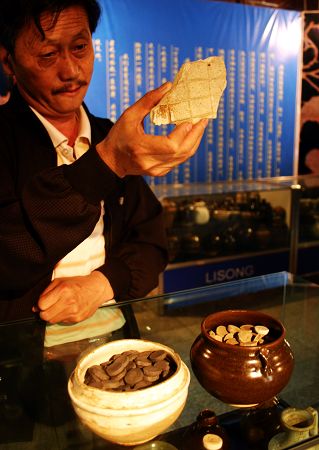
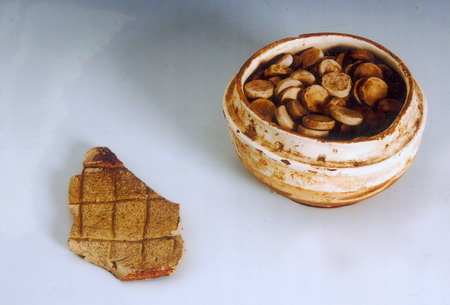
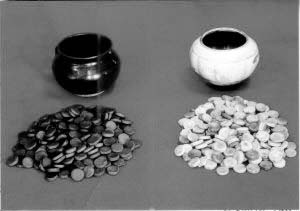
Description : Fragment of a pottery Go board, and a set of black and white ceramic Go stones in black and white ceramic bowls, These are in a private collection, and their source is unknown, although it can be reasonably surmised that they could only have come from a robbed tomb. A number of similar ceramic Go stones were discovered between 1983 and 1986 at the site of the Lingwu kiln; in Ningxia province.
Date : Supposedly Western Xia (1038-1227), but with no archaeological context this cannot be verified.
Grid : Uncertain, probably; 19 from the number of stones.
Stones : Reportedly 200 black stones and 200 white stones, but not certain whether this is an approximate or an exact count.
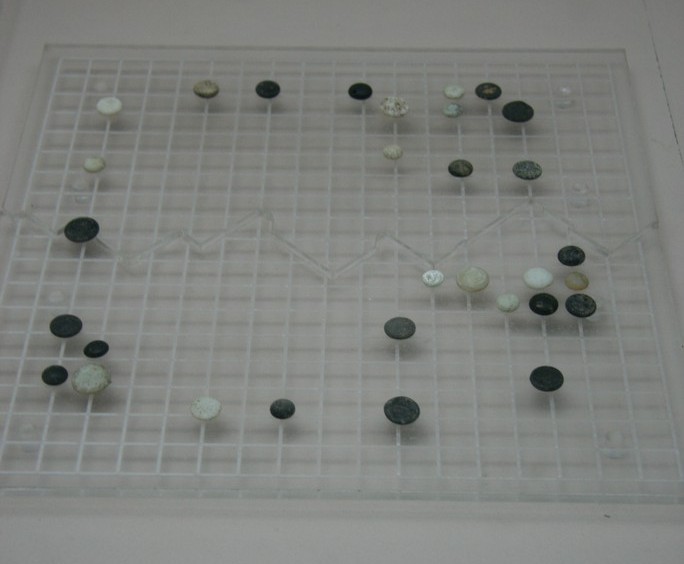
Description : Go stones excavated from the site of the first Jin dynasty capital (Shangjing 上京) at Acheng in Heilongjiang province.
Date : Jin dynasty (1115-1234).
Stones : 18 black and 14 white Go stones of various sizes.
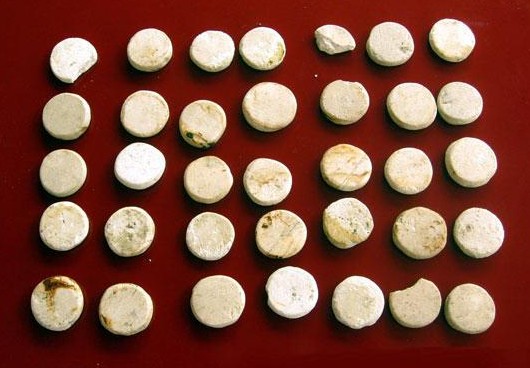
Description : White Go stones discovered in 2009 in an ancient well at a construction site in Chengdu city in Sichuan province.
Date : Northern Song (960-1127).
Stones : About 30 white stones.
Re: исторические комплекты игры Го, Китай

|
Михаил Емельянов на rugo.ru Эксперт Го
|

Description : Detail of a mural at the Lower Guangsheng Temple 廣勝寺 in Hongdong 洪洞 county of Shanxi province (see Playing Go on a Chinese Chess Board).
Date : Yuan dynasty (1271-1368) : circa 1319-1324.
Grid : 9×12, apparently the board being used for playing Go is a non-standard Chinese Chess board
обратите внимание на цвет камней и на вид поля
Re: исторические комплекты игры Го, Китай

|
Михаил Емельянов на rugo.ru Эксперт Го
|
Это Корейский комплект.
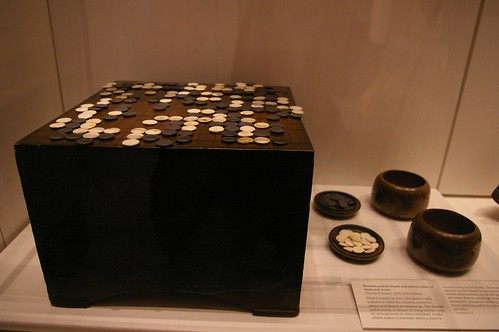
Wooden paduk board and pieces made of shell and stone Choson Dynasty, 18th-19th century Played mainly by men, this game is also popular in other Far Eastern countries, where it is known as weiqi or go. The Korean paduk board is unique in being hollow, with an arrangement of wires stretched inside which makes it resonate when a piece is moved on top of the board. There are 324 squares on the board but the game is played on the intersections, not in the spaces. There are many Korean paintings depicting Korean aristocrats (yangban) whiling away the hours playing paduk in a small summer pavilion.

Wooden paduk board and pieces made of shell and stone Choson Dynasty, 18th-19th century Played mainly by men, this game is also popular in other Far Eastern countries, where it is known as weiqi or go. The Korean paduk board is unique in being hollow, with an arrangement of wires stretched inside which makes it resonate when a piece is moved on top of the board. There are 324 squares on the board but the game is played on the intersections, not in the spaces. There are many Korean paintings depicting Korean aristocrats (yangban) whiling away the hours playing paduk in a small summer pavilion.
Извините, только зарегистрированные пользователи могут писать в этом форуме.






